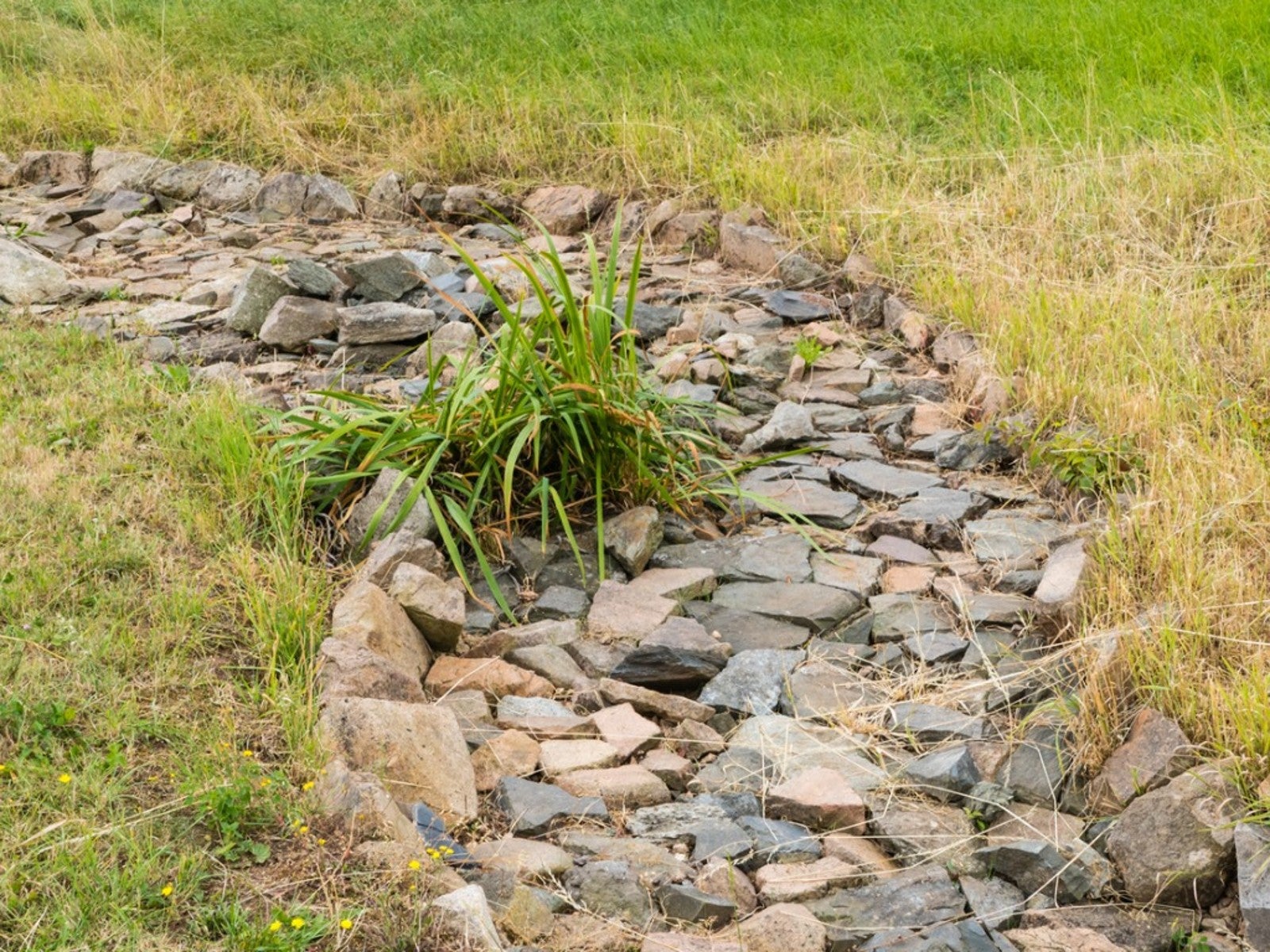What Is A Dry Creek Bed: Tips On Creating A Dry Creek Bed For Drainage


What is a dry creek bed and why should you consider creating one in your yard? A dry creek bed, also known as a dry stream bed, is a gully or trench, usually lined with stones and edged with plants to mimic a natural riparian area. You may decide to implement dry stream beds for drainage, thus preventing erosion by reducing runoff. On the other hand, you may simply like the way it looks! Read on to learn about creating a dry creek bed in the landscape.
How to Build a Dry Creek Bed
There is a myriad of dry creek bed ideas to be found, so finding something that suits your particular needs or interests shouldn’t be difficult. That said, a few basic guidelines will help make the process an easier one.
First, map out your dry creek bed, making it follow an existing slope as it meanders through your landscape like a natural stream. Consider where the water flows during a heavy rainfall or snow melt and be sure not to direct the water to a street, toward your house, or onto your neighbor’s property.
Once you’ve determined the path of the stream, mark the edges with landscaping paint. Remove existing vegetation and dig your dry creek bed, then line the bed with landscape fabric held in place with landscape pins. As a general rule, streams are about twice as wide as the depth, so a dry creek bed measuring 4 feet (1 m.) across would be about 2 feet (61 cm.) deep.
Mound the excavated soil around the sides of the creek to create a natural appearance or transfer it to soil-challenged areas in your landscape. Cover the bed with a thick layer of gravel or coarse sand, then spread river rocks of various sizes and shapes down the length of the creek bed so they look like Mother Nature placed them there (Hint: laying them on their sides will make it appear as running water). Bury larger rocks partially so they look more natural.
Some people like to mortar river rocks in place, but most find that this step isn’t necessary unless you expect rushing waters to run through your creek.
Once you’ve finished creating a dry creek bed, plant native shrubs, ornamental grass, or flowers along the banks and disguise the “headwaters” with large boulders or plants. Interesting dry creek bed ideas also include logs, stepping stones, or wooden bridges. Moss adds a natural element if your dry creek bed is in the shade.
Sign up for the Gardening Know How newsletter today and receive a free copy of our e-book "How to Grow Delicious Tomatoes".

A Credentialed Garden Writer, Mary H. Dyer was with Gardening Know How in the very beginning, publishing articles as early as 2007.